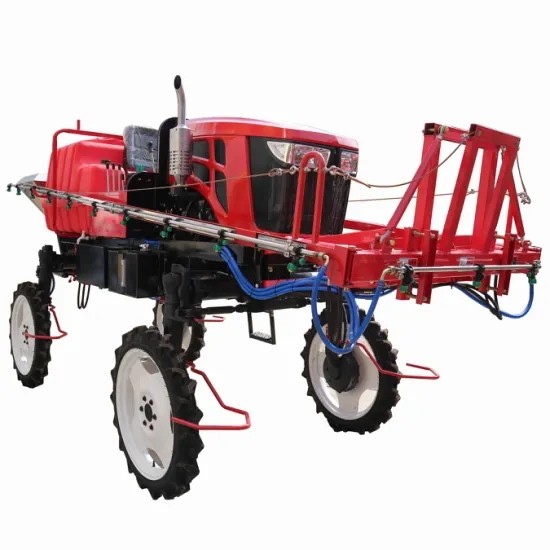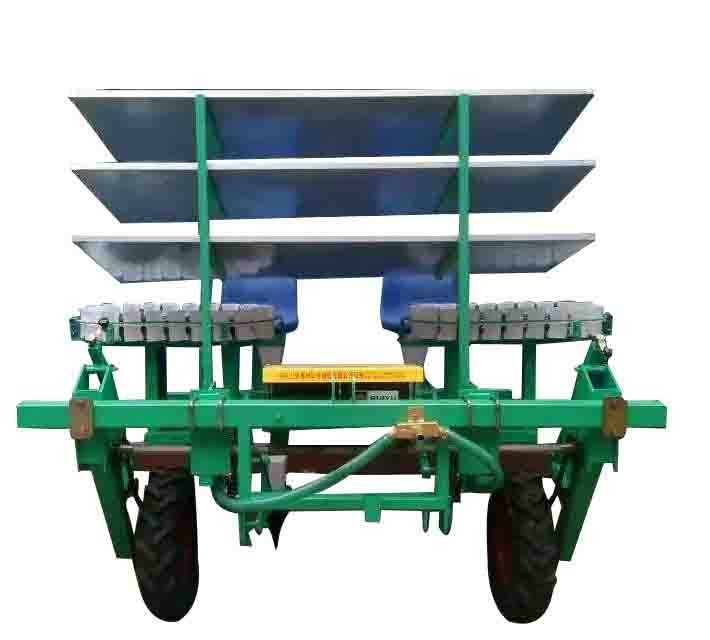
The mechanization process is slow, how difficult is it to harvest yam mechanized?
Release time:2023-05-27 Click:489
Yam, native to Asia, is loved by people for its edible and medicinal properties, and is currently cultivated in all parts of the north and south of China. In the pursuit of healthy diet, yam with its excellent health effects are increasingly welcomed and accepted by people, making yam have excellent economic value. In today's increasingly developed science and technology, mechanization is an inevitable development trend.
After the yam matures, the length can generally reach 80~150cm, and the longest can exceed 200cm, and the yam rhizome is brittle and easy to break; Moreover, yam planting and varieties have their own regional characteristics, and yam cultivation is still mainly scattered and small-scale planting by farmers. There is a lack of special machinery for yam harvesting in the market, and farmers do not recognize these machines well. Therefore, most of the yam harvesting is still harvested manually, and a deep trench is dug between the two adjacent ditches where yam is planted, and the yam on both sides is exposed for manual picking. This harvesting method is labor-intensive, inefficient, unsustainable, and cannot meet the development of the yam industry. It is imperative to develop a yam harvester for efficient harvesting of yam.
Nowadays, yam has been recognized and loved by the public for its edible value, health care effect and medicinal value, and has great potential in the food industry and processing industry. In this case, the area of yam cultivation has also increased year by year, and its economic benefits have become increasingly significant. Different from its broad development prospects, the harvest of yam is still relatively backward, and the mechanization process is very slow. The slow mechanization process has also restricted the development of the yam industry to a certain extent. Yam belongs to deep rhizome plants, its stem extends downward, when mature, yam is generally 60~150cm, up to 200cm, and its stem diameter is generally not more than 5cm, slender stem is easy to break, affecting the quality of yam.
At present, farmers still harvest yam mainly manually, and then manually dig a deep trench about 1 meter deep between the two yams, so that the yam on both sides is exposed, manual picking, the work is intensive, the efficiency is low, and skilled personnel are required, and the cost is high. At present, there is no unique machinery on the market that specializes in harvesting yam, and the existing machinery is very easy to damage yam and cause losses. Therefore, the development of a harvesting machine for yam plays a crucial role in improving the economic value of yam and giving full play to its value.
International cultivation is mainly concentrated in East Asian countries, such as China, Japan, South Korea, etc. But yam harvesters are derived from trenchers, and the first countries to produce trenchers are the United States and the former Soviet Union. At present, the countries with relatively fast development of trenchers include the United States, France, Italy, and other countries. The earliest trencher was the plough trencher, and in the 50s of the 20th century, the plough was used in farmland construction as the earliest ditching equipment. The structure of the plough trencher is simple but the trenching depth is shallow, the quality of the ditching is poor, it cannot work on hard soil, and the great traction resistance required during work makes the plough trencher not well developed.
In the late 50s of the 20th century, the rotary trencher rose, rapid development, compared with the plough trencher, it has small traction resistance, strong adaptability, neat ditching, these advantages make it rapid development and application, but the disadvantage is complex structure, large unit power consumption, low productivity. Yam harvester A more commonly used trencher is a vertical spiral trencher, originally made a kind of farmland drainage digging ditch and ditch digging machine, yam harvesting using this kind of trencher, the depth of the trench can be controlled, the work efficiency is greatly improved. In the late 70s of the 20th century, chain trenchers appeared, as a popular yam harvester that existed universally, and was welcomed for its simple equipment, convenient assembly, and controllable trench depth and width.
At present, the mainstream harvester is still a spiral trencher and chain trencher, although the development of foreign trencher technology is relatively mature, but due to the high price, inconvenient maintenance and high maintenance costs, individual yam growers and areas with tight funds can not afford it, so domestic users basically will not choose foreign advanced machinery, and this also provides favorable conditions for the development of ditching machinery in China.
China's ditching machinery started late, and ditching machinery was introduced from abroad from the 60s of the 20th century; Formal development began in the 70s, and through its own research and drawing on foreign experience, initial results have been achieved. The level of ditching machinery in China continues to improve; By the mid-80s of the last century, China introduced a small number of trenchers from abroad for drainage projects of agricultural dark pipes; From the 90s of the last century to the present, China's trenchers are mainly screw trenchers and chain trenchers. Domestic users have more choices in the use of trenchers, but due to the slow start, whether in imitation or independent research and development, trenching machine products due to the technology is not mature enough, the efficiency is not high, the quality of ditching is not high, the performance is unstable and the cost is too high, the ditching machinery in the country has not formed a large-scale, batch production.
The degree of mechanization of yam harvesting in China is still low, and many yam growers still choose to hire people or dig by hand with their own families when harvesting yam; The so-called mechanized harvesting is only the use of ditching machinery to open a deep trench on the side of the yam, and then manually pick it up, only realizing the semi-mechanized production of yam.
In China, the mainstream way of yam harvesting is ditching, using spiral trenchers and chain trenchers for harvesting; At the same time, there are still some other harvesting methods, such as the water gun harvesting method used in some parts of Jiangsu. Water gun harvesting is a harvesting method only used in some parts of Jiangsu, using a high-pressure water gun to wash the yam planting soil block at the harvest time, so that the surface of the soil is wet, and then insert the high-pressure water gun into the yam planting ditch, open the water gun valve, so that the high-pressure water flow into the soil, the soil in the planting ditch is continuously washed out by the high-pressure water flow, the water gun continues to go deeper, so that the yam tubers in the planting ditch are naturally exposed in a large area, and the remaining soil is also soaked by water under the impact of the high-pressure water flow, in a soft state At this time, the yam rhizome is removed by hand as a whole. It reduces the labor intensity, but its disadvantages are also significant, the impact of high-pressure water flow makes the skin of yam extremely vulnerable to damage and rust, which affects the quality of yam and reduces the economic value of yam. And the harvested yam needs to be sold or processed in a very short time. This harvesting method uses the principle of high-pressure water flushing, although it reduces the labor intensity of farmers to a certain extent, but the damage of yam is relatively large, waste water resources, and have a great impact on the land, thus affecting the growth of crops. Therefore, this harvesting method is currently only used in parts of Jiangsu.
Yam harvesting in most areas is currently harvested using machinery, mainly using spiral trenchers and chain trenchers. The spiral trencher mainly uses the principle of spiral cutting lifting to excavate the soil. A deep trench is opened between the two yam planting ridges by a screw trencher, so that the yam on both sides is exposed, and then manually picked up and received uniformly. The traction power required by the screw trencher is very small, can evenly sprinkle the thrown soil on both sides of the ditch, and the harvesting efficiency is also greatly improved, compared with the manual harvesting method, the advantages of this harvesting method are: 1 fast speed, 2 high efficiency, 3 can control the depth and width of the ditching, the quality of the ditching is guaranteed, 4 reduces the labor intensity of the farmer.
However, the disadvantages of the spiral trencher are: 1. Adjust the position well when using it to prevent the ditching from being too wide and damaging the yam, or the width of the ditch is not enough, resulting in the yam still hidden in the soil and it is difficult to be manually picked; 2 Secondly, the damage rate of yam in this harvesting method is still relatively high, which cannot effectively reduce the damage of yam in harvesting, and 3 The harvesting method also destroys the soil layer, resulting in an increase in the workload of planting yam again in the next year, and the harvesting process is not fully automated.
The development and design of a harvester that can realize the automatic excavation of yam and can be separated from the soil will surely reduce the labor intensity of farmers, improve the harvesting efficiency of yam, improve the quality and output value of yam, and thus promote the development of its industrialization. Moreover, the economic value of yam can be maximized, so that related industries centered on yam can flourish, increase the added value of yam, and benefit thousands of farmers. At present, many scholars have provided many highly creative theoretical designs of yam harvesters, but they have not studied deeply, made actual machines, and carried out field harvesting tests. The research and design of yam harvesters is extremely old, and the task is heavy and long.

Hot products

3wpz-700s Agricultural Self Propelled Boom Sprayer with High Clearance for Insecticide and Fertilization

Crawler tractor

Self Propelled Boom Sprayer

Vegetable tomato Transplanter
Tel:+86-15095208459
E-mail:yanyuqiang1216@163.com
